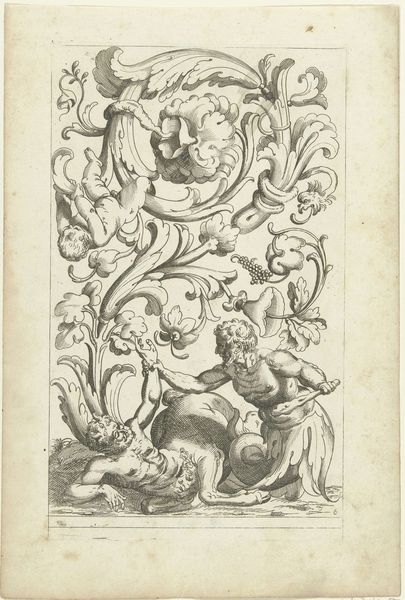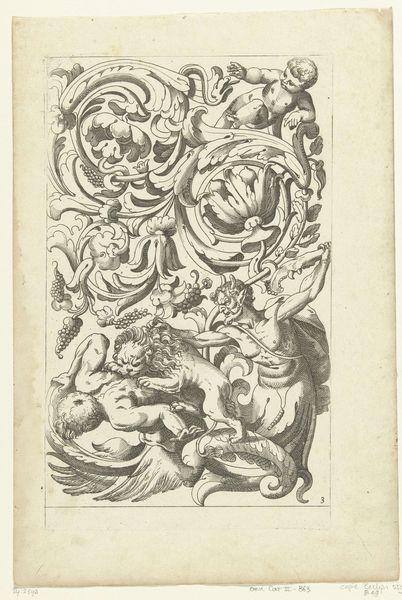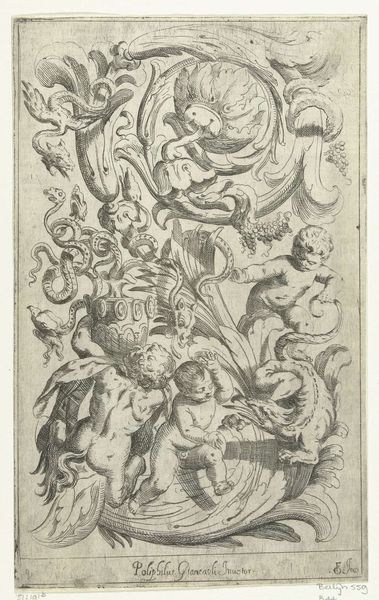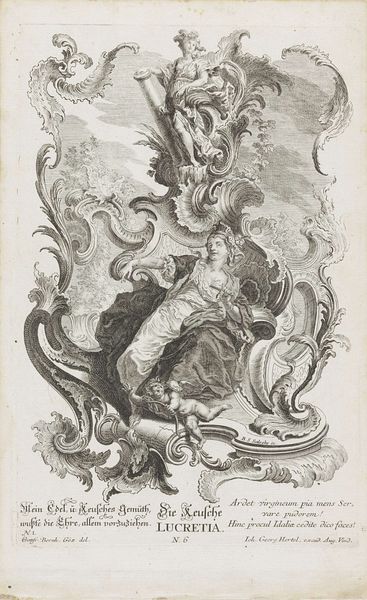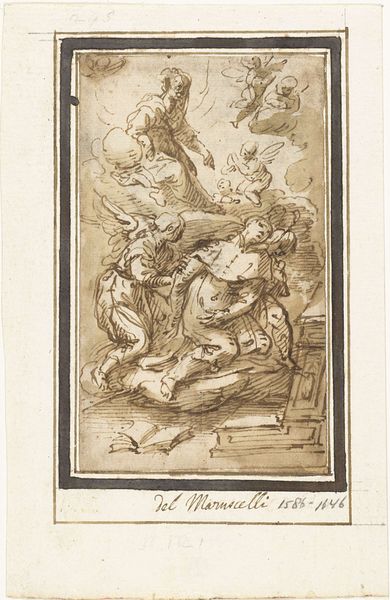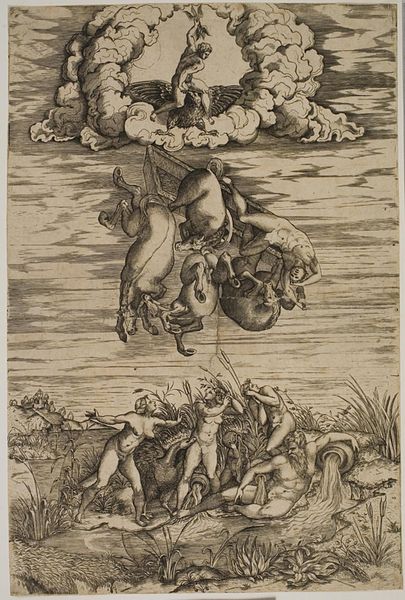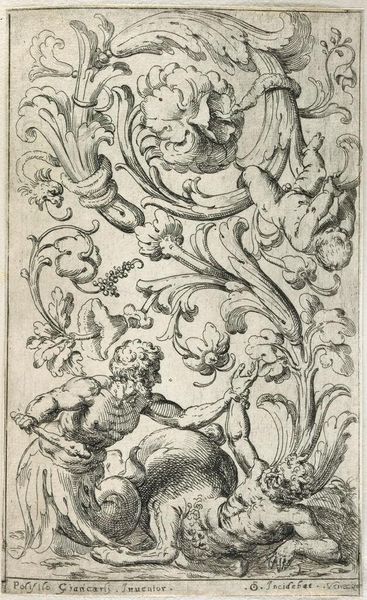
print, engraving
#
portrait
#
baroque
# print
#
landscape
#
figuration
#
history-painting
#
engraving
Dimensions: height 317 mm, width 214 mm
Copyright: Rijks Museum: Open Domain
Curator: This print, "De moedige Cloelia", crafted between 1730 and 1770 by Balthasar Sigmund Setletzky, really takes me back. There's something about the swirling lines and dramatic composition. It's as if Setletzky isn't just telling a story but pulling you into the midst of it all. Don't you think? Editor: It’s at the Rijksmuseum, and it seems like it depicts some sort of heroic scene. There’s definitely a sense of movement and drama. What can you tell me about this piece, beyond the beautiful lines? Curator: Well, Cloelia’s story itself is pretty thrilling, isn't it? She was one of the Roman hostages given to Lars Porsena. She escaped his camp, leading a group of virgins back to Rome. Now, see how Setletzky frames this moment—the ornamental border almost bursting with energy? That tension… is it visual courage, do you think, mirroring Cloelia’s bravery? Editor: I can see that now. The border does make it more…intense. But is that the whole story? Why go through all the effort of adding the border to the Baroque style? Curator: Baroque loves drama, right? The frame isn't just decoration; it amplifies the heroine’s defiant act. It invites us to admire, but also to ponder. Are we truly free, or are we all contained in boxes that can never be opened, by circumstances of our past or by our own doing? It all makes you think, right? Editor: It does! The frame emphasizes the constraints and contrasts with her bravery, making the print more thought-provoking than just a simple historical illustration. Thanks! Curator: Exactly. It seems like Balthasar wasn’t simply creating pretty images; they were building philosophical arguments through form and content. Beautiful *and* cunning – now that's my kind of artist!
Comments
No comments
Be the first to comment and join the conversation on the ultimate creative platform.


